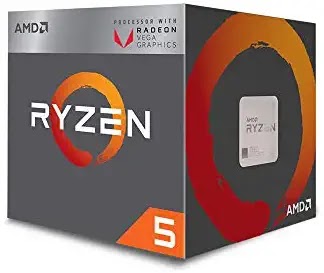Understanding VRM in Motherboards: Its Crucial Role in Gaming and Overclocking Performance
If you are considering a stable performance throughout gaming or multitasking VRM is important, A Voltage Regulator Module(VRM) makes power delivery stable so that it can deliver stable performance. Different manufacturers have different types of VRM in motherboards like analog or digital, some come with heavy heatsinks, and some with ordinary heatsinks.
VRM takes power from the PSU to power the CPU/GPU, and it has three main components: MOSFET, Chokes, and Capacitors. MOSFET is the main heating element; it switches the voltage, which creates heating. A low-quality MOSFET heats a lot more than a high-quality MOSFET.
Chokes and capacitors smooth the current flow by storing it, realizing it when needed, and reducing electric noise.
A MOSFET provides power to the motherboard by controlling and switching the power. These mosfet for the motherboard is usually made of silicon but some manufacturers also use GaN mosfet for enhanced life and performance.
How to Identify VRM in a Motherboard
Chokes/Inductors near the CPU socket on a motherboard is VRM it can be 6,8,10, or any number. It is surrounded by mosfet and capacitors with a metallic heatsink or without a heatsink.
Comparison of Digital vs Analog VRM
An analog VRM uses components like the analog controller for managing the power need which is less efficient in voltage and power control than a digital VRM. Whereas a Digital VRM uses a Digital Signal Processor (DSP) to control the voltage and power delivery which allows precise voltage tuning for better stability.
Since analog uses conventional components to translate power, it causes some rippling, which generates heat a bit more than digital vrm. Digital VRM is highly optimized for power delivery and therefore it generates less heat and has less power loss, especially under loads like overclocking or gaming.
Digital VRM provides great stability while overclocking or gaming, it is considered the best by gamers and those who want to push CPU/GPU limits. Whereas analog may not be stable while gaming or overclocking as it may cause lagging or lead to crash. Analog VRM is affordable compared to Digital VrM as both are designed as per market need, analog is for entry-level gaming or tasking whereas Digital VRm is preferred for heavy gaming or workstations.
Importance of VRM in Gaming and Overclocking
Stability is the core requirement for performance and to stabilize a high-quality VRM is crucial. while gaming high current is used and to deliver that amount of current consistently an efficient vrm and cooling heatsink is necessary for the system.
Gaming requires high power to render the graphics and gameplay, therefore a motherboard with good-quality vrm is important. Usually, some motherboard has a standard vrm with 6 phases and no heatsink which leads to heating and lag in performance. VRM in a motherboard plays a crucial role in CPU/GPU power management.
If a motherboard has good vrm with more phase count like 10+ and heavy heatsink then it can be optimized manually above stock setting for overperformance like overclocking. For overclocking a VRM should have a good cooler and a higher phase count. Overclocking requires above-stock power therefore a solid voltage regulator module only can manage. A good heatsink can help stabilize the temperature and performance.
Frequently Asked Questions:
1. Does VRM have any impact on gaming?
Yes, a good and high-quality VRM will provide stability while gaming, whereas a low-quality VRM in the motherboard will cause instability, errors, or crash the system. The more impact is on long games with heat and power effiecency.
2. How many VRM phases do I need?
It depends on user needs, for example, if your need is gaming or overclocking then you may need more than 8 phases of VRM would be needed for your setup. But if your need for the motehrboard is normal use then you may prefer below 8 as it is affordable.
3. Difference between Single-phase and Multi-phase VRM in a motherboard
Single-phase VRMs deliver power through one phase, which makes it less efficient, hotter, and unfit for overclocking or for gaming. Multi-phase VRMs supply the load across multiple phases, ensuring better efficiency, cooling, and stability, making them ideal for gaming, overclocking, and demanding systems.











.jpg)
0 Comments